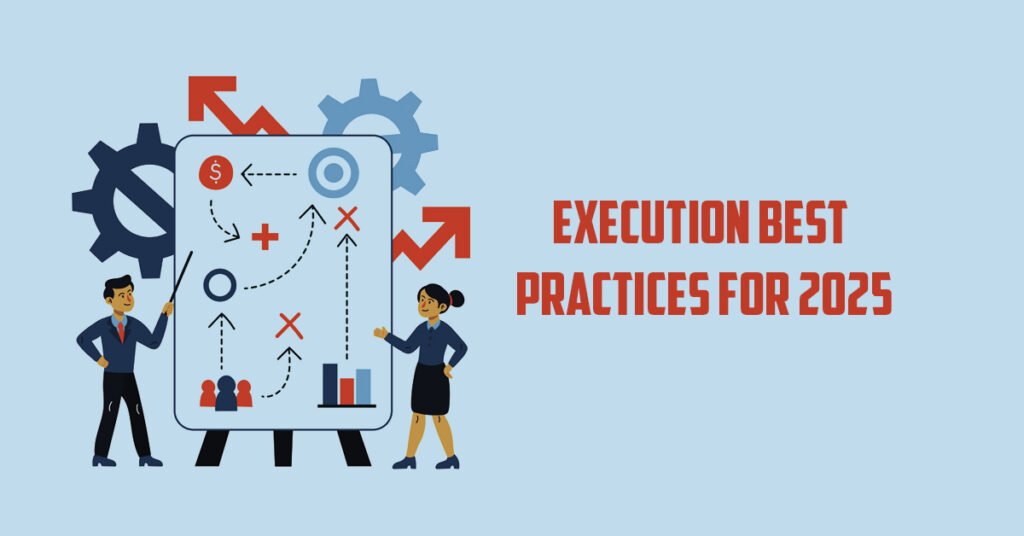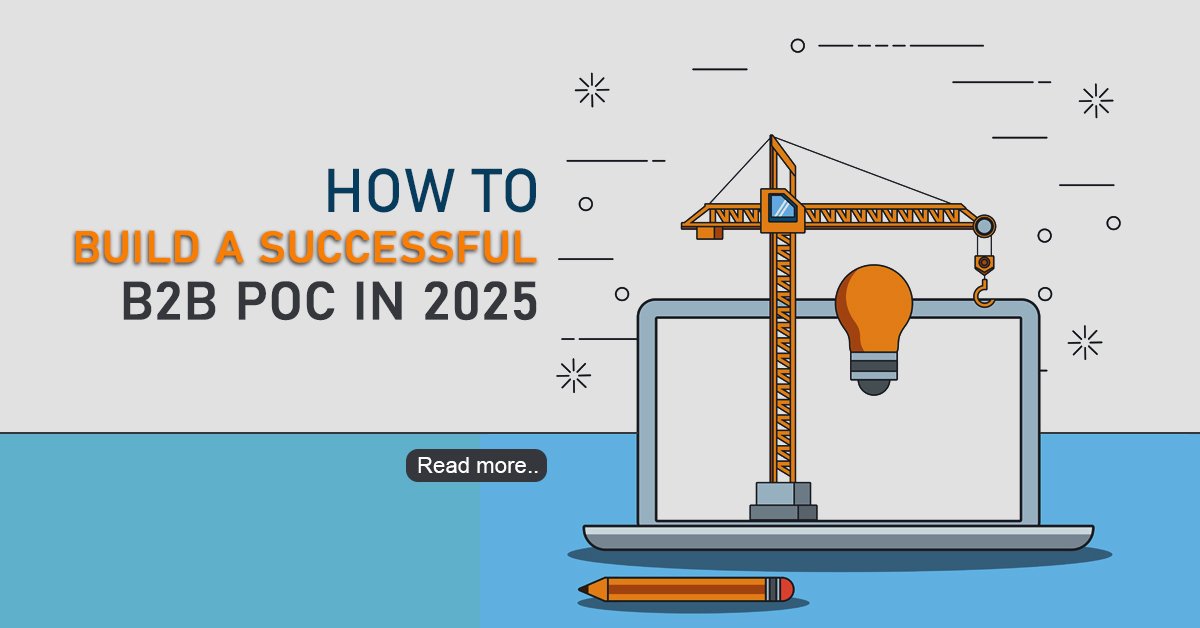- 1 The POC Paradox That’s Costing You Deals
- 2 Laying the Foundation Before You Start
- 3 Structuring Your POC for Maximum Impact
- 4 Execution Best Practices for 2025
- 5 The Critical Transition: POC to Contract
- 6 Common POC Pitfalls and How to Avoid Them
- 7 2025-Specific Considerations
- 8 Conclusion: From Proof of Concept to Proof of Partnership
- 9 Ready to Transform Your POC Strategy?
The POC Paradox That’s Costing You Deals
Here’s a scenario that plays out in B2B sales every day: Your team wraps up a three-month proof of concept. The technology worked flawlessly. The client’s technical team is thrilled. And then… crickets. The deal stalls, gets pushed to next quarter, or the client decides to “re-evaluate their priorities.”
Industry data suggests that up to 70% of technically successful POCs never convert to paid contracts. That’s months of engineering time and opportunity cost wasted.
In 2025, the stakes are higher. Buying committees have grown to 8-10 stakeholders. Economic uncertainty makes CFOs scrutinize every line item. AI has accelerated expectations for time-to-value. And prospects are running simultaneous POCs with competitors, treating pilots like free consulting.
The good news? The gap between a technical win and a revenue win is bridgeable. This guide provides a proven framework for structuring POCs that don’t just prove your technology works—they prove you’re the partner your client needs.
Laying the Foundation Before You Start
The biggest mistake in B2B POC strategy happens before the pilot begins: starting with the wrong opportunity.
Red Flags That Signal POC Failure
Not every opportunity deserves a POC. Watch for these warning signs:
- No identified budget or timeline: “We’re exploring options” means “we’re not buying soon”
- Missing economic buyer engagement: If you can’t get 30 minutes with the check-signer, you’re building on sand
- Vague success criteria: “Let’s see if it works” isn’t a metric—it’s a recipe for eternal pilots
- Single-threaded relationships: One champion means you’re one reorg away from restarting
Example: A SaaS company spent four months on a POC with a Fortune 500 retailer. The IT director loved it. But they’d never met the CFO, who had already committed budget elsewhere. The POC was technically perfect and commercially dead.
Defining Success Criteria That Matter
Technical proof isn’t enough. Your success criteria must tie to business outcomes executives care about:
- Wrong: “Successfully integrate with existing CRM”
- Right: “Reduce sales cycle length by 20% measured by opportunity aging reports”
- Wrong: “Deploy AI model with 95% accuracy”
- Right: “Decrease customer churn by 15% in target segment within 60 days”
Document these in a mutual success plan signed by technical and business stakeholders. This becomes your north star and leverage during conversion conversations.
Stakeholder Mapping: Your Insurance Policy
Map stakeholders before day one:
- Champions: Technical users who love your solution (but rarely control budget)
- Economic Buyers: C-level or VP-level decision makers who approve spending
- Influencers: Department heads who can accelerate or kill deals
- Blockers: Skeptics, incumbent allies, or people threatened by change
Touch at least three stakeholders across two organizational levels during the POC. This creates multiple pathways to “yes.”
The 30-60-90 Day Framework
Set hard deadlines:
- Days 1-30: Quick win phase—demonstrate core value with minimal customization
- Days 31-60: Deep integration—connect to client systems and prove scalability
- Days 61-90: Business case phase—capture ROI data and prepare for commercial discussions
Day 91 is decision day, not “let’s extend and see.” This prevents eternal pilots.
Structuring Your POC for Maximum Impact
The Success Metrics Trap
Clients push for comprehensive technical validation. Your engineers, eager to showcase capabilities, agree. Three months later, you’ve built a custom solution for free.
Instead, select 3-5 metrics that ladder to executive priorities:
For a sales enablement tool:
- Revenue team adoption rate (measures change management risk)
- Time saved per rep per week (measures efficiency)
- Pipeline velocity improvement (measures business impact)
Notice what’s missing? Twenty technical integration points and “nice to have” functionality. Those conversations happen during implementation—after signing.
Resource Allocation Without Over-Servicing
Be responsive without becoming free consultancy. Set boundaries:
What you provide:
- Weekly check-ins with defined agendas
- Async support via Slack or ticketing (4-hour response SLA)
- Monthly executive briefings
What you don’t:
- 24/7 support (that’s paid)
- Custom development (position as post-contract roadmap items)
- Unlimited training (offer 3-5 sessions, then documentation)
Frame professionally: “We want to simulate what partnership will look like, including our standard support model.”
Documentation: Your Silent Salesperson
Every week, document:
- Progress against success metrics (screenshots, data, videos)
- User feedback and testimonials
- Challenges overcome
- ROI calculations with real data
When the economic buyer asks “What have we accomplished?”, send a compelling document that sells while you sleep.
Execution Best Practices for 2025
Weekly Cadence That Works

Weekly 30-minute check-in agenda:
- Wins from past week (3 minutes)
- Metrics update (5 minutes)
- Blockers and troubleshooting (10 minutes)
- Next week’s priorities (5 minutes)
- Stakeholder updates (5 minutes)
- Parking lot (2 minutes)
Send this agenda 24 hours before calls. It trains clients to come prepared.
Monthly executive briefing: Present a 10-slide deck showing POC progress, business impact, and projected ROI at full deployment. This keeps senior stakeholders engaged.
Handling Technical Obstacles Strategically
When to pivot: If a core integration requires architectural changes to your product, acknowledge it and propose an alternative achieving the same business outcome.
When to push through: If the issue is environmental (outdated infrastructure, security policies), help them understand this is organizational readiness, not a product limitation.
The key is transparency. Clients respect vendors who say “Here’s the problem, why it happened, our plan to solve it, and the timeline.”
Building Internal Champions
Your day-one champion got you in. Now multiply your advocates:
- Identify power users and feature them in case studies
- Create a POC steering committee with representatives from each department
- Share early wins in client’s internal channels (with permission)
- Invite users to provide roadmap feedback (makes them invested)
Capturing ROI Evidence in Real-Time
From day one, track:
Quantitative:
- Time savings (hours/week)
- Cost reduction (dollars)
- Revenue impact (new opportunities, faster closes, reduced churn)
- Efficiency gains (processes automated, errors eliminated)
Qualitative:
- User satisfaction scores
- Adoption rates
- Stakeholder sentiment
Build a dashboard that updates weekly. When asked “Is this worth it?”, you have a real-time answer.
The Critical Transition: POC to Contract
This is where most deals die—not from technology failure, but mishandled commercial conversations.
The Conversion Conversation
Bad timing: Waiting until day 89 of a 90-day POC Good timing: Introducing commercial conversations at 50-60% completion
Bad framing: “So, are you ready to buy?” Good framing: “Based on what we’re seeing—[cite metrics]—we’re on track to hit success criteria. Let’s discuss what implementation looks like so we can transition smoothly from POC to production.”
You’re not asking for a decision. You’re assuming success and moving to logistics.
Creating Authentic Urgency
Tie to business events: “Q1 planning starts in six weeks. To impact Q1 results, we need to finalize by month-end.”
Resource allocation: “We have implementation slots next month. After that, the next opening is Q2.”
Momentum maintenance: “The team you’ve worked with knows your environment. Transitioning post-contract extends time-to-value by 4-6 weeks.”
These are real constraints presented as information helping informed decisions.
Address Procurement Early
The number one stall reason? Legal and procurement weren’t looped in until technical said “yes.”
Start parallel tracks at midpoint:
- Week 5-6: Introduce your contracts team to their procurement
- Share standard terms and identify sticking points
- Discuss security, compliance, approval workflows
- Get a procurement timeline with milestones
The Mutual Success Plan
In week 8 of a 12-week POC, present a mutual success plan outlining:
- POC metrics achieved
- Business case validated
- Contract finalization timeline
- Implementation kickoff date
- Resource commitments
- Success metrics for first 90 days post-deployment
Get stakeholder signatures. It’s not a contract, but a commitment device creating accountability.
Common POC Pitfalls and How to Avoid Them
Scope Creep
The trap: “Can you also test integration with our warehouse system? And legacy ERP? And for our European division?”
The escape: “That’s great for post-contract roadmap discussion. Our POC validates [original criteria]. Adding scope would push timeline and dilute focus on core value.”
Prevention: Include a “scope change request” process. Any new requirements trigger formal discussion about timeline and resources.
The Eternal Pilot
The trap: Week 12 becomes week 24. “Just one more department wants to test it.”
The escape: Build sunset clauses: “This pilot concludes on [date]. We’ll transition to commercial agreement or conclude the engagement. Extensions require executive approval and documented justification.”
Prevention: Use the pre-mortem method. At kickoff, ask: “Imagine it’s 12 weeks from now and we haven’t moved forward. What happened?” Surface objections early.
Free Consulting Syndrome
The trap: Your engineers are doing implementation work for free—customizing dashboards, training users, providing strategic advisory.
The escape: “This level of customization is part of our premium implementation package. During POC, we’re proving core capabilities. For this engagement level, let’s discuss moving to paid pilot or accelerating to contract.”
2025-Specific Considerations
AI and Automation in POC Execution
Smart vendors use AI to accelerate POCs:

- Data analysis: AI analyzes client data faster, compressing month-long validation into days
- Demo environments: AI generates realistic synthetic data, reducing setup time
- Documentation: AI assistants create progress reports and ROI calculations
- Personalization: AI customizes demos for different stakeholders without manual effort
Vendors winning POCs in 2025 demonstrate modern, efficient processes—not just modern products.
Security and Compliance
Post-pandemic security scrutiny has intensified:
- Share SOC 2, ISO 27001 certifications upfront
- Offer security documentation at POC kickoff
- Demonstrate compliance expertise early
- Propose limited data environments to speed security approval
Security reviews now often take longer than technical validation. Start security approval parallel with POC kickoff.
Multi-Stakeholder Buying Committees
With 8-10 people involved, your POC must serve multiple audiences:
- Create role-specific artifacts (technical validation, ROI analysis, change management plans)
- Schedule targeted touchpoints—don’t force everyone into same meetings
- Map influence networks using org charts and LinkedIn
Economic Uncertainty
In uncertain times, POCs face higher scrutiny:
- Lead with cost savings or risk mitigation, not just growth
- Offer flexible commercial terms (shorter contracts, usage-based pricing)
- Benchmark against status quo: “Your current process costs $X annually”
- Position as competitive advantage: what winners in their industry are doing
Conclusion: From Proof of Concept to Proof of Partnership
Technology proof is table stakes. Companies that consistently convert pilots to contracts aren’t necessarily building better products—they’re building better partnership validation processes.
Track your POC-to-revenue ratio as a key metric. If you’re converting less than 40% of technically successful POCs, you have a process problem, not a product problem.
Your 30-Day Action Plan
Week 1: Audit your last five POCs. Which converted? Identify patterns.
Week 2: Create standardized POC documents: mutual success plan template, stakeholder map, weekly agenda, ROI dashboard.
Week 3: Train your team on qualification red flags and transition conversations. Role-play hard scenarios.
Week 4: Implement one tactical improvement in your next POC.
The best POCs don’t just answer “Does the technology work?” They answer “Can we trust this company to be a strategic partner?”
When you structure POCs to answer that second question, technical validation becomes the easy part—and contracts flow naturally from successful pilots.
Ready to Transform Your POC Strategy?
Download our free B2B POC Success Checklist with templates, scorecards, and decision frameworks.
Share your experience: What’s your biggest POC challenge? Drop a comment below.
Stay ahead: Subscribe for monthly enterprise sales strategies and case studies.
Remember: Great pilots prove partnerships, not just products. Build accordingly.






